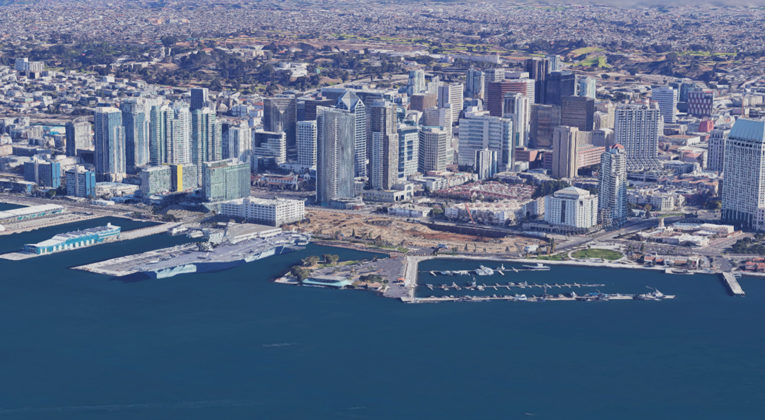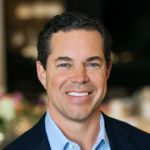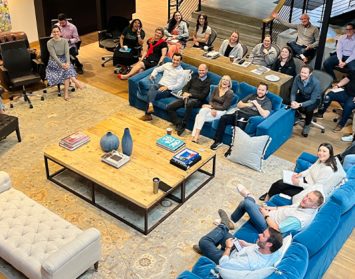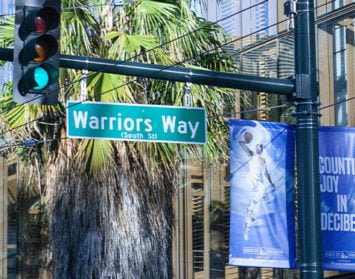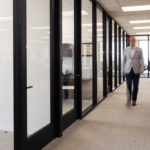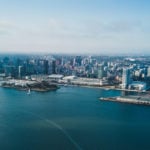By Jason Hughes
Downtown San Diego office space availability is at a 30+ year high at 34%. Meanwhile, tenant leasing is at an all-time low. And downtown tenants are shedding space at an unprecedented rate. These are all, on their own accord, terrifying facts for downtown landlords. Put all together, it’s a triple witching hour of huge pending property devaluations.
Just when things couldn’t get any worse, out of Torrey Pines comes a potential savior! That’s right–Life Science!
I’m sure I wasn’t the only one watching the Pacific Gateway project figuratively sink into the bay, as today’s climate couldn’t be worse for new hotel and office development. But just last week, a life science REIT by the name of IQHQ, based in Solana Beach, controlled by Alan Gold, apparently went “non-refundable” for tens of millions of dollars to purchase the southern 2/3rds leasehold interest of the Pacific Gateway project from Doug Manchester. Given the climate, I’m sure it was a steal, but even so, IQHQ wants to redesign and re-imagine the complex for all life-science tenants with rents starting at $6/sf triple net! For those that don’t know what triple net (NNN) means, it means you, as the tenant, pay ALL costs associated with owning the property (property taxes, insurance, maintenance, utilities, janitorial, etc.) in addition to the base rent (correct, all the negative attributes of ownership–without any of the benefits!). At $6 NNN, the true rent per square foot per month will likely be $7.50 -$8.00/sf! (Rents are much higher for life science space due to increased infrastructure costs as well as build-out costs typically being double or more that of office space; extra costs include expenses for a massive central HVAC plant to provide single pass air with hospital quality HEPA filters, laboratory benching with distributed de-ionized water and gases, higher floor-to-floor ceiling heights to allow distribution of all that mechanical, back-up generators, glass wash autoclaves, walk-in freezers and coolers, hazardous material handling, animal testing and storage vivariums, etc.).
Now at first, that kind of rent seems insane. But in San Francisco or Boston, some life science landlords have received the equivalent of nearly double that! But let’s back up for a moment and think about San Diego’s life science community. There are two very large life science developers/landlords, including Alexandria Real Estate and BioMed Realty, and numerous smaller life science developers (Healthpeak, Longfellow, Phase 3, etc.). Most life science companies are located in Torrey Pines, UTC and Sorrento Mesa/Valley with some spillover into Carmel Valley, and occasionally North County.
There are more than 25+ buildings under construction/renovation, under conversion from office to lab, or in the queue for development in Torrey Pines, UTC, Sorrento and the 56 corridor–each between 45,000 to 150,000 sf to support the industry right now. That’s millions of square feet already in the works. Meanwhile, leasing transactions can be done in these established markets from $4.25/sf to $5.50 NNN today–and the market is flat with no rent growth.
But while many of us stand around scratching our heads as to how this makes sense, it’s important to understand the backer–and the capital markets. Alan Gold is considered platinum in the life science real estate world. He started and grew BioMed Realty–and ultimately sold it to Blackstone in early 2016 for $8 billion. Gold is currently on the board of trustees for the Salk Institute for Biological Studies. Gold has surrounded himself at IQHQ with other real estate life science experts and clearly raised a bunch of money (rumored to be $900 million). And money, in case you have been living in a cave for the last 4 months, is aplenty. As a result of the central bank flooding the markets with cash–and shielding investors from losses–money managers are throwing billions at anything (or anybody) with a solid track record and compelling story. Gold is the track record, and bayfront biotech is the story.
While you’re asking yourself, yeah, clearly Gold is legendary, but with millions of square feet vacant downtown, how does buying leased land from the Navy, and then erecting incredibly expensive lab/office space with an incredibly expensive sub-water table parking garage make sense when Downtown is unproven, and more importantly, there are years of available life science product in proven, agglomerative submarkets already?
That’s clearly above my pay grade–as it seems nuts. Maybe it’s because they have a huge life science company from out of town in tow. If Johnson & Johnson, Bayer or any one of the Top Pharma 50 needed a new SoCal hub to poach talent from our world acclaimed existing bio-talent, downtown’s bayfront might just be the ticket. It’s unlikely that smart guys bet tens of millions on just a hunch and a dream, but you never know. In any event, I truly hope they pull it all together, as we need something to offset the homelessness surge, the boarded-up retail, the limited parking–and the otherwise consistent exodus out of downtown. Got to love the visionaries out there, and if they can make this insanity successful, Gold is in for one big kiss from this guy!
Jason Hughes is founder of Hughes Marino, an award-winning commercial real estate company with offices across the nation. A pioneer in the field of tenant representation, Jason has exclusively represented tenants and buyers for more than 30 years. Contact Jason at 1-844-662-6635 or jason@hughesmarino.com to learn more.

